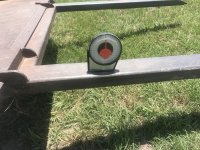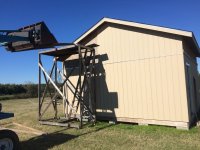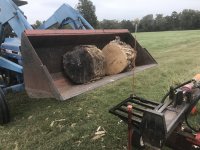rScotty
Super Member
- Joined
- Apr 21, 2001
- Messages
- 9,701
- Location
- Rural mountains - Colorado
- Tractor
- Kubota M59, JD530, JD310SG. Restoring Yanmar YM165D
Thanks for the thread - a reminder that I need to reinstall my bent up rod that came with the tractor and which I did learn how to use before I bent it and took it off. There are those times when I am just guessing if it is level. . . and making mistakes. This gives me something to do with the tractor today. If I can find the rod.
Yes, I was thinking the same thing. I took the rod and tube off the Kubota because it rattled too much for my ears back then, and for about 15 years now have been using those leveling pads that Kubota kindly welded to the top of the bucket. Just like the one Repete showed back in message #21. But mine has one on each side. At the time, I found them more useful than the rod & tube & a lot quieter.
But so many people like their rod and tube type indicators that maybe I've missed something. Since the rod and tube are still hanging in the barn, I might as well put it back on the loader and give it a second try - might learn something. Some hose ought to take care of the rattle.
rScotty



